
9708_002-077e-04.04X
Load Cells
Low Impedance
Voltage Mode
9708A…
9712B…
Types:


Series 97XX Load Cell Page 2
002-077e 4.04
Contents
Section Page
Contents............................................................................................................................................ 2
Section Page 2
1. Introduction ......................................................................................................................... 4
2. Important Guidelines .......................................................................................................... 4
2.1 For your safety ..................................................................................... 4
2.2 Precautions ..................................................................................... 4
2.3 Using This Manual ..................................................................................... 5
2.4 Load Cell Types ..................................................................................... 5
2.5 Manual Nomenclature ..................................................................................... 6
3. General Description ............................................................................................................ 6
3.1 Supplied Items ..................................................................................... 6
Table 2: Supplied Mounting Studs4. Technical Information, Functional Description6
4. Technical Information, Functional Description ............................................................... 7
4.1 Piezoelectric Measurement Concept ....................................................................... 7
4.2 Internal Construction Overview................................................................................ 7
4.3 Low Impedance Output ..................................................................................... 7
5. Installation .................................................................................................................................... 8
5.1 General ..................................................................................... 8
5.2 Surface Preparation ..................................................................................... 8
5.3 Mounting ..................................................................................... 8
6. Operation ............................................................................................................................. 10
6.1 Powering ..................................................................................... 10
6.1.1 Using “Built In” Power Sources................................................................................ 10
6.1.2 Kistler Couplers ..................................................................................... 10
6.1.3 The Constant Current Power Supply/Coupler ......................................................... 11
6.1.4 Sensor Power-Up ..................................................................................... 14
6.1.5 Overload Recovery ..................................................................................... 14
6.1.6 Supply Voltage Effects ..................................................................................... 14
6.2 Driving Long Cables ..................................................................................... 15
6.4 Frequency Response Limits .................................................................................... 16

Series 97XX Load Cell Page 3
002-077e 4.04
7. Maintenance and Calibration ............................................................................................. 16
7.1 General ..................................................................................... 16
7.2 Trouble Shooting ..................................................................................... 16
7.3 Repairs ..................................................................................... 17
7.4 Cleaning ..................................................................................... 17
7.5 Calibration ..................................................................................... 17
8. Accessories ......................................................................................................................... 18
8.1 Cables ..................................................................................... 18
Appendix........................................................................................................................................... 20

Series 97XX Load Cell Page 4
002-077e 4.04
1. Introduction
By choosing Kistler load cells you have opted for an instrument
distinguished by precision, long life and technical innovation. Please read
these instructions carefully before installing and operating these
instruments.
Kistler offers a wide selection of measuring instruments and comprehensive
systems including:
• Quartz and sensors for force, pressure, acceleration, shock,
vibration and strain.
• Variable capacitive sensors for acceleration and inclination.
• Associated signal conditioners and accessories.
• Piezoresistive pressure transducers and transmitters with
associated amplifiers.
Kistler can also provide entire systems for special purposes in the
automotive industry, plastics processing, and biomechanics. Our general
catalog provides information on Kistler products and services. Detailed
technical data sheets are available on most products offered.
Worldwide customer service is at your disposal should you have any
questions regarding this or other Kistler products. Information on your
specific application is also available from Kistler.
2. Important Guidelines
To ensure your personal safety, please observe the safety guidelines in
this section.
2.1 For your safety
• Carefully follow the installation information contained in
section 5 of this manual.
• Do not drop the instrument.
• Store in the case provided and in a clean, dry environment.
• Power the instrument in accordance with the instructions in
section 6 of this manual.
2.2 Precautions
Kistler load cells are thoroughly tested before leaving the factory. To
maintain safe and reliable operation, it is important to follow the
instructions herein.
• Do not mount on high voltage surfaces.
• Keep cable clear of power lines and open machinery.
• Never operate or store the unit beyond the specified
temperature range.
• Do not exceed the maximum specified current.

Series 97XX Load Cell Page 5
002-077e 4.04
• Never exceed the maximum specified voltage.
• Follow the instructions for mounting. Do not over tighten.
• Do not expose the unit to excessive shock, i.e., by using a
hammer or dropping the unit.
• When not in use, store in the container supplied. Always
store in a clean, dry area.
• Keep the connector clean and covered when not in use
• Follow the recommendations in section 7.4
2.3 Using This Manual
Information contained herein includes a technical description, installation
and operating instructions, powering and considerations for cable length.
Section 8 contains a listing of mounting accessories and cables available
to assist with your measurement needs.
It is recommended that the entire manual be read prior to installation and
operation of the load cell. The user who has prior experience with PiezotronÜ
type load cells may want to confine reading to particular sections of interest.
We have endeavored to arrange these instructions in a manner that
allows for easy location of topics of interest. Your Kistler representative is
also available to assist with any questions.
Information contained herein may be subject to change.
2.4 Load Cell Types
This manual is applicable to the load cells listed on the title page. Please
see the product data sheets at the rear of this manual for detailed
specifications.
Series 9708 Series 9712B
Figure 1: Load Cells Described in this Manual

Series 97XX Load Cell Page 6
002-077e 4.04
2.5 Manual Nomenclature
Throughout this manual some special designations and nomenclature are
used for specific terms and concepts relating to load cells. These are
explained in Table 1.
Term Definition
FS Full Scale
Piezotron Kistler sensors with built-in impedance converters
lbf Pound-force
Table 1: Manual Nomenclature
3. General Description
Kistler load cells are compact, sensitive, fast response sensors for measuring
dynamic and short-term static forces. Both compression and tension forces
can be measured. Typical applications include measuring fatigue-test tension,
rocket engine thrust, clamping force and forces transmitted by vibration
exciters. In simple terms this instrument could also be described as a force
probe.
These load cells are designed for bottom surface mounting with an upper
force application surface. The units differ in configuration by the location of the
cable connector. With series 9708 the connector is located axially while the
9712 series features the connector positioned radially.
A self-generating piezoelectric sensing element is used in conjunction with the
built-in, internal circuit Piezotron impedance converter. As with most load
cells, the sensitivity of this unit is expressed in terms of the ratio of the
electrical output to applied force (e.g. mV/lbf).
Being a low impedance device, no charge amplifier or special cabling is
required and transmission over long lines is possible with a minimum of
noise pick-up.
3.1 Supplied Items
Supplied items, other than operating instructions, for load cells are listed
in Table 2.
Load Cell Item Description Quantity Kistler Part Number
Type 9708A(X) Mounting stud, threading – 10-32 to 10-32 1 8402
Type 9708AE(X) Mounting stud, threading – 10-32 to M6 1 8411
Type 9712B(X) Mounting stud, threading – 10-32 to 10-32 2 8402
Type 9712BE(X) Mounting stud, threading – 10-32 to M6 2 8411
Table 2: Supplied Mounting Studs

Series 97XX Load Cell Page 7
002-077e 4.04
4. Technical Information, Functional Description
4.1 Piezoelectric Measurement Concept
Piezoelectric load cells convert an applied force into an electrical signal.
The electrical output derived by the load cell is proportional to the force
acting on the internal quartz (piezoelectric) element.
Quartz belongs to a class of materials called piezoelectric because a
charge of electricity is produced when the material is deformed. For this
reason these load cells are effective in dynamic or short duration
(quasistatic) measurements.
4.2 Internal Construction Overview
These load cells contain two main components. The larger internal
structure is an electro mechanical device that includes the piezoelectric
sensing element.
The second component is a smaller electronic circuit that changes the
form of the signal produced by the first component. This electronic
portion requires external power to activate the electronic circuit. This load
cell thus requires a power supply/coupler to support the function of the
load cell.
Both powering of the load cell and conducting the load cell output signal is
accomplished by a single conductor coaxial cable.
The form of the load cell output signal is described in more detail in
Section 4.3
4.3 Low Impedance Output
The load cell produces a low impedance output nominally below 100
ohms. Signals in a low impedance form are also referred to as voltage
mode. Signals in a high impedance form are also called charge mode.
Kistler uses the terminology voltage mode, low impedance and charge
mode, high impedance to clarify the difference.
Both modes offer certain advantages to applications. Kistler
manufactures load cells of both kinds. Certain trade names are have
become more commonly used to describe the voltage mode, low
impedance style of sensors, including load cells.
Kistler was issued the patent for the original voltage mode, low
impedance style, and called sensors with the impedance converter
circuitry Piezotron style units.
The integral impedance converter is powered by an external power
source (coupler) that uses a coax cable between the load cell and
coupler. The signal and power share a common line. The coupler
provides a constant current source to the load cell and decouples the DC
bias (see Section 6.1.3) from the measuring instrument. The useful signal
is seen as a varying voltage over an 11 VDC (nominal) bias.
Low impedance load cells are ideally suited for applications where long or
moving cables are required or in high humidity or other contaminated

Series 97XX Load Cell Page 8
002-077e 4.04
atmospheres. The calibration factor for load cells are given in mV/lbf for
the 9708A(X) and 9712B(X). The calibration factor for the 9708AE(X) and
9712BE(X) is mV/N.
Figure 2: Diagram of a Low Impedance Load Cell System
1. Low impedance (voltage output)load cell
2. Coaxial cable
3. Coupler (constant current supply) or dual mode amplifier
4. Cable
5. Readout or analysis equipment
5. Installation
5.1 General
For proper operation of load cells, care must be taken during the
installation process. Careful installation will result in optimal accuracy and
reliability.
5.2 Surface Preparation
Surfaces on or between which a load cell is mounted must be flat and
parallel. Ground or lapped mounting surfaces are desirable. For maximum
accuracy and frequency response, the roughness should not exceed 16
microinches (0.4 micrometer) and flatness should be 0.0001 inch
(2.5micrometers).
Severe uneveness can cause stress concentration leading to sensing
element damage.
If the load cell is to be placed between two surfaces, the two surfaces
must be parallel at all times and should not impart more than 100 pounds
transverse load.
5.3 Mounting

Series 97XX Load Cell Page 9
002-077e 4.04
Load cells are mounted with supplied studs, either one or two depending
on the type. The stud requires a mounting surface hole tapped with a 10-
32 thread for the 9708A(X) and 9712B(X). The 9708AE(X) and
9712BE(X) require a hole tapped for an M6 thread. The hole depth must
be such that the stud will not bottom out. Table 2 indicates the Kistler
order number for studs. These studs are machined from Beryllium
Copper for high strength and low modulus of elasticity, coupled with high
elastic limits. Substitutions should be carefully evaluated before use.
1. Drill and tap an adequate hole to ensure a flush mount of the
load cell. Make sure the stud does not bottom out. A
chamfer should be machined at the top of the mounting hole
to ensure that the base of the load cell makes full contact with
the mounting surface.
2. Completely clean the surface prior to mounting.
3. Apply a thin coat of silicon grease to both the load cell and
mounting surface.
4. Always use the proper sockets and a torque wrench when
installing load cells. Tighten to the torque specified on the
individually supplied calibration certificate or as specified in
Table 2. Do Not Over Tighten.
Upper/lower studs In-Lbs Nm Load Cell Type
no/ yes 24 9708A(X),
no/yes 2.7 9708AE(X)
yes/yes 20 / 24 9712B(X)
yes/yes 2.3 / 2.7 9712BE(X)
Table 3: Recommended Mounting Torque
The load cell may be mounted in any attitude, and generally without regard
for top or bottom orientation. Top and bottom surfaces are indicated by the
appearances of the upper and lower mounting surfaces (bosses). The load
cell top of the series 9708 is the side opposite the external axial mounting
thread. The series 9712 top has single ring and the bottom has two
annular rings.
It is perfectly acceptable to use a single mounting stud with the series
9712. When working with very small forces, a single stud is suggested.
With small forces the mass of the outer body and base could interfere,
affecting frequency response or masking the results of impact tests. In
such cases, mount the load cell on its bottom only and apply the force to
the top.
For compression force measurement alone, the installation can be
simplified by eliminating one of the mounting studs. Both the mounting
surface and the surface that bears the load cell must still be flat and
parallel.
Care should be taken in any installation to assure that the cable is not
stressed, kinked or otherwise abused. Cable details are listed in Section
8.1.

Series 97XX Load Cell Page 10
002-077e 4.04
6. Operation
Piezoelectric load cells are self generating sensors. While the quartz
piezoelectric element does not require an external power source, it is
necessary to provide power to the load cell’s internal electronic impedance
converter. This section is intended to provide the user with the information
necessary to ensure accurate measurements with Kistler load cells. Topics to
be covered include powering, signal conditioning, frequency response and
driving long cables.
6.1 Powering
6.1.1 Using “Built In” Power Sources
Before using the built-in power source, compare the measurement
instrument current source specifications with the current and voltage
specifications. If the instrument load cell power is within the range
required by the specific load cell, there should be no problem with
compatibility. If the user plans to drive long cables (over 430 feet/130 m)
the guidelines in section 6.2 should be followed.
Caution: Many industrial monitors have adjustable current controls.
Exceeding the maximum current rating of any load cell may cause
permanent damage and void the warranty.
6.1.2 Kistler Couplers
Kistler offers a comprehensive line of power supply/couplers and dual mode
amplifiers. If the user is utilizing these instruments, they are designed for
compatibility with load cells. The Table 4 provides a listing of available power
supply/couplers. Please request data sheets on specific models.
Type 5010B1 This series of bench type single channel charge amplifiers
is the most versatile of the Kistler line as it is dual mode
and can accept low impedance, voltage mode sensors as
well. Push button, keypad controls for sensitivity, range,
operate/reset, time constant and selectable filtering. Also
rack mountable.
Type 5108 Passive coupler. Customer provides power.
Type 5114 AC/battery powered single channel coupler with LCD
display to monitor bias. LED’s indicate status of sensor
circuit. Portable or table-top use. CE approved
Type 5118B2 AC/battery powered single channel coupler with 1X, 10X,
100X gain and high pass filter switch. CE approved
Type 5134A 4-channel AC powered coupler and amplifier. Selectable
high pass filters and gain. Random noise generator for
testing with FFT analyzer. Remote control and sensing
via RS-232C. CE approved
Type 5148 16-channel rack mountable AC powered coupler with
unity gain. LED’s indicate circuit integrity. Front panel
BNC output connectors.

Series 97XX Load Cell Page 11
002-077e 4.04
Type 5350 Sensor simulator for trouble shooting or checking system
performance. It provides an ideal means to confirm
sensor location or detect inoperative cables. Connects
directly to the input of any Kistler coupler or any
compatible power source. Output frequencies of 100 Hz
or 1000 radians/second, sine or square wave with
adjustable amplitude.
Table 4: Kistler Couplers for Load Cells
6.1.3 The Constant Current Power Supply/Coupler
To better understand the purpose of the current source, a review of the
Piezotron impedance converter is in order.
Figure 6 is a simplified schematic diagram of the load cell. When excited,
the quartz element produces a charge proportional to the measurand.
The resultant voltage(developed across Cr in Figure 6) is applied to the
input of the internal impedance converter (Electrometer Amplifier). The
impedance converter will produce an output voltage that follows the input
faithfully.
Figure 6: Simplified Diagram of Load Cell with Piezotron
Quartz
Element
+
PIEZOTRON AMPLIFIER
To Coupler
C
r
R
t
Electrometer Amplifier
Sensor

Series 97XX Load Cell Page 12
002-077e 4.04
Figure 7: Schematic Diagram Of A Simple Coupler
Figure 7 shows a schematic of a simple power supply coupler for load
cells. DC power is supplied from a 24 volt source such as a regulated
power supply or batteries. One advantage of the Piezotron system is the
fact that a simple coaxial cable is used for both power and signal. The
power is the DC bias necessary to operate the impedance conversion
electronics. It should not affect the output signal or make the output ride
on it when viewed. With the signal and power both sharing the same line,
it is necessary to include the capacitor C to decouple (or block) the DC
bias voltage from the measurement instrument input.
Operating within the voltage range of 20...30 VDC assures a full
undistorted ±5 Volt output amplitude (See Figure 8A). If the source
voltage is reduced, distortion and clipping of the signal will occur if one
attempts to use the full amplitude range of the load cell (See Figure 8B).
The following equations are provided to calculate the maximum full scale
voltage available when operating with a reduced voltage.
Maximum positive amplitude:
+= −−Fs Es Eb()1
Maximum negative amplitude:
−= −Fs Eb 2
Where:
Fs
Es
Eb
= Full scale output voltage (peak).
= DC supply voltage (sometimes called compliance voltage).
= bias voltage (from calibration certificate).
! = positive amplitude anti waveform distortion factor
2 = negative amplitude anti waveform distortion factor

Series 97XX Load Cell Page 13
002-077e 4.04
2-3V Required by
current limiting circuit
28V(E
s
)
E
b
0V
Impedance Converter
cannot go below 2-3V
Figure 8A: Output Signal When Operated With 28V Supply
Low Supply
Voltage
Distortion and
Clipping Occurs
E
b
Figure 8B: Example of Output Distorting and Clipping when Supply Voltage is Low

Series 97XX Load Cell Page 14
002-077e 4.04
6.1.4 Sensor Power-Up
When power is first applied to the sensor, (through an AC coupled
coupler) a voltage will appear at the output of the coupler (See Figure 9A).
As the coupling capacitor discharges, the DC output, from the coupler will
drop to zero Volts. This "settling time" is equal to 5 times the time constant
of the coupler employed. Allow time for the unit to "settle" before making
measurements.
6.1.5 Overload Recovery
Whenever the impedance converter is driven by a signal exceeding the
normal operating range, certain components will become non operational.
During this non operational state, the amplifier components are protected
from overload damage. The amount of time required for recovery from an
overload depends on several factors. Important for overload recovery
time is the size of the overload. As with power-up, the time constant
makes the biggest contribution to the recovery time. Figure 9B illustrates
a typical overload and recovery sequence.
6.1.6 Supply Voltage Effects
Long-term fluctuations in the power supply level between 24 and 30 volts
can be tolerated. The sensitivity shift caused by such deviation is less
than 0.05%/Volt. A normal noise level is maintained if the power supply
ripple is 25mV RMS or less. The polarity must be maintained throughout
the system since applying reversed polarity power may cause damage to
the load cell.
Figure 9A:
Behavior Of The Output Signal
Durin
g
Power-Up
Figure 9B:
Output Behavior During
Overload and Recovery

Series 97XX Load Cell Page 15
002-077e 4.04
6.2 Driving Long Cables
The voltage mode Piezotron circuit allows for long cable runs with low noise
susceptibility. Most data acquisition and laboratory analysis instruments with
built-in load cell power provide current in the range of 2 to 4 mA. Most Kistler
couplers are set at the factory to provide 4mA of source current. 4mA is a
good compromise value for maximum frequency response and high reliability.
Most Kistler couplers can be factory adjusted to provide up to 20mA.
Assuming a cable capacitance of 30pF/foot(98 pF/m), the full frequency
range of load cells can be realized (±5 Volt output) up to a length of 430
feet (130 meters) with 4 mA of drive current. Most Kistler cable types and
common RG58 coaxial cable have a rated capacitance of 30 pF/foot (98
pF/m). For most laboratory applications this is quite adequate.
As cable length is increased the cable capacitance becomes significant,
thereby loading the Piezotron impedance converter. If the current is not
sufficient to charge the cable at an adequate rate, high frequency
distortion will be experienced. The solution to this problem is to increase
the drive current
For the user's convenience a chart is provided (See Table 5). The values
given are based on a cable capacitance of 30 pF/foot (98 pF/m). The list
of cables available from Kistler can be found in section 8.1. All cables in
this section are 30pF/ft (98 pF/m) except for the 1331 and 1635 which are
20 pF per foot(65 pF/m).
Maximum
Frequency +/- 5%
Cable Length Ft
(meters)
Current (mA) Required
For Output Signal
+/- 1 Volt
Current (mA) Required
For Output Signal
+/- 5 Volts
10 kHz 1000 (300) 2 10
2000 (600) 4 18
9 kHz 1000 (300) 2 9
2000 (600) 4 17
8 kHz 1000 (300) 2 8
2000 (600) 3 15
7 kHz 1000 (300) 2 7
2000 (600) 3 14
6 kHz 1000 (300) 2 6
2000 (600) 3 12
5 kHz 1000 (300) 2 5
2000 (600) 2 10
♦ Based on 30 pF/ foot (98 pF/meter)
Table 5: Current Requirements for Driving Long Cables
6.3 Ground Loops
The ground loop is one of the most common causes of ground noise. It
will usually manifest itself as unwanted noise occurring at the line
frequency (50 - 60 Hz).
Ground loops occur when current flows between the load cell and
coupler/conditioner grounds. If the coupler ground and the load cell
ground are at exactly the same potential, there will be no ground loop

Series 97XX Load Cell Page 16
002-077e 4.04
between these two devices. If the ground potential is different between
the load cell mounting surface and the coupler ground, a slight current will
flow causing a ground loop to occur (See Figure 11). While the amount of
current might seem insignificant, the measurement levels are generally
very low and the ground current will appear on the signal at a measurable
level. There can be many causes of ground loops in a complete
measurement system but the ground path between the load cell and
coupler is among the most common.
6.4 Frequency Response Limits
All load cells have specified frequency limits that are a function of the
mechanical and electrical design. Frequency response is defined as a
maximum specified amplitude variation, from an established reference
frequency, over a specified bandwidth.
In simple terms, the frequency response is the range of slow moving events
(low frequency) to fast moving events (high frequency) that the load cell will
faithfully measure
Filtering is often used to reduce or even eliminate unwanted high frequency
signals.
An intimate coupling between the load cell and mounting surface is required to
maximize the conduction of forces being measured. High frequency events
are especially susceptible to poor measurements from marginal mountings.
Section 5 details proper mounting.
7. Maintenance and Calibration
7.1 General
The hermetically sealed construction of load cells precludes any internal
maintenance or repairs. External cleaning is important as covered in
section 7.4.
7.2 Trouble Shooting
Should the user experience any problems with a load cell, the following
procedure should be followed.
Check for possible intermittent cables. Faulty cables are the
most common cause of load cell measurement problems.
The application of a test signal at the load cell end of the
cable is an effective means to determine if the problem is load
cell, cable, or measurement instrument related. An
instrument such as the Kistler Transducer Simulator type
5350 is ideal for this test.
Some Kistler couplers are equipped with a bias monitor which can be
used to check the cable integrity and detect malfunctions in the load cell.
Use the bias monitor as follows:
A. With the load cell connected, check for a normal reading on
the bias indicator (normal should be around 11 VDC).
B. If the bias reading deviates more than ±2 V of 11 V, the load
cell may be defective.

Series 97XX Load Cell Page 17
002-077e 4.04
C. If the bias indicator reads low, disconnect the load cell.
1. If the bias indicator still reads low, replace the cable.
Analysis and measurement equipment with built-in load cell sources
generally do not have bias monitors. In these cases, the user can attach
a T connector to the measurement/analysis instrument and measure the
actual bias voltage. If the system is operating properly, the bias voltage
should measure approximately 11 Volts. Defects should show-up as in A
and B above.
If it is determined that the load cell requires repair, please contact the
factory or your local distributor/representative for repair information.
7.3 Repairs
Field repair is not possible. Please return the load cell to the factory
together with a statement of problems encountered and unit serial
number. Recalibration is recommended when returning a load cell to the
factory. Please contact the factory and obtain a return authorization
number prior to return.
7.4 Cleaning
Clean the load cell with Isopropyl alcohol and lint-free paper wipes. Never
use air-blast to clean the connector; it may deposit a water vapor film.
Do not us an abrasive on the base surface. This can affect the flatness
thereby reducing high frequency transmissibility.
7.5 Calibration
Calibration consists of the precise determination of the load cell sensitivity
by direct comparison to a National Institute of Standards and Technology
(NIST) traceable standard load cell . The resultant amplitudes of both
load cells are then compared to determine if the test unit is within
tolerance.
Calibration services are available from Kistler. Kistler acceptance test
instrumentation is in conformance with MIL-STD-45662A. A calibration
certificate will be supplied showing calibration results from standards
traceable to NIST.

Series 97XX Load Cell Page 18
002-077e 4.04
8. Accessories
8.1 Cables
Kistler recommends the use of the Type 1761sp(X) cable with load cells.
The cable is available in standard and custom lengths. Cables with other
connectors and other cables for interconnecting measuring system units
are shown below.
Type 1761sp(x) General purpose cable/connector. 10-32 pos. to BNC pos.
Type 1762sp(x) General purpose cable/connector. 10-32 pos. to 10-32 pos.
Type 1511Bsp BNC pos. to BNC pos. General Purpose
x= Length in meters, please specify
Consult Kistler for any special cable needs.

Series 97XX Load Cell Page 19
002-077e 4.04
Appendix
Specifications for Kistler load cells and related load washers, force links
and low level force sensors plus many other instrumentation products are
shown on the Kistler website www.kistler.com.
This is a listing of information sheets and technical articles related to load
cell applications. Contact Kistler using the information listed on the front
cover of these instructions.
Information Sheets
Information Sheet Number Title
KI 6.001e How to Select a Force Sensor
Technical Article Reprints
Reprint
Number
Title
20.193e Guide to the Measurement of Force
K20.220 Measurement of Dynamic Forces
20.176e Measuring of Cutting Forces in High Precision
Machining
Application Notes
Application
Note Number
Title
K20.500 Process Monitoring in Stamping
K20.501 Crimping: Process Monitoring and Control
K20.502 Process Monitoring in Clinching
K20.503 Monitoring the Orbital Riveting Process
K20.504 Monitoring of Threaded Fastener Assembly Torques
K20.505 Spot Welding: Process Monitoring and Control
Page is loading ...
Page is loading ...
-
 1
1
-
 2
2
-
 3
3
-
 4
4
-
 5
5
-
 6
6
-
 7
7
-
 8
8
-
 9
9
-
 10
10
-
 11
11
-
 12
12
-
 13
13
-
 14
14
-
 15
15
-
 16
16
-
 17
17
-
 18
18
-
 19
19
-
 20
20
-
 21
21
-
 22
22
Kistler 9712B5 Owner's manual
- Type
- Owner's manual
Ask a question and I''ll find the answer in the document
Finding information in a document is now easier with AI
Related papers
-
 Kistler 9722A500 Owner's manual
Kistler 9722A500 Owner's manual
-
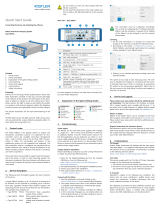 Kistler 2895AK1 Quick start guide
Kistler 2895AK1 Quick start guide
-
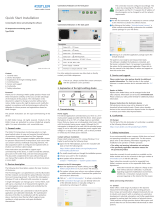 Kistler 2549AK1 Quick start guide
Kistler 2549AK1 Quick start guide
-
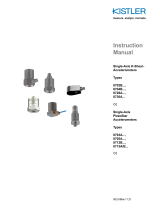 Kistler 8704B25M1T Owner's manual
Kistler 8704B25M1T Owner's manual
-
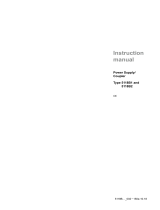 Kistler 5118B2 Owner's manual
Kistler 5118B2 Owner's manual
-
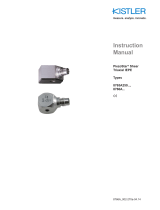 Kistler 8768A100BB Owner's manual
Kistler 8768A100BB Owner's manual
-
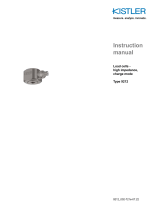 Kistler 9212 Owner's manual
Kistler 9212 Owner's manual
-
 Kistler 5108A Owner's manual
Kistler 5108A Owner's manual
-
 Kistler 8770A50 Owner's manual
Kistler 8770A50 Owner's manual
-
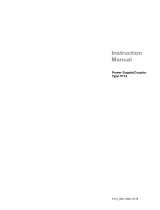 Kistler 5114 Owner's manual
Kistler 5114 Owner's manual































